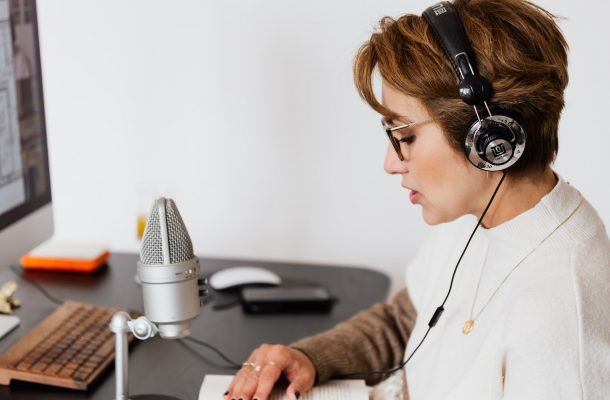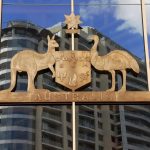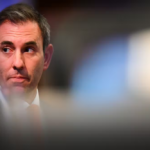I hear what you say – How the Aussie accent is changing

The chances of Anthony Albanese becoming Prime Minister at the next election may hinge not so much on his policies, but how he articulates them.
It isn’t just what we say that makes a difference, but how we say it. Likeability aside, Albo’s voice could be out of tune with the electorate he wants to woo.
Spearheaded by the nation’s migrant intake, the Aussie accent is transforming for the good of clarity and understanding.
This seamless process is happening without most of us even realising, unless we take time out to really listen.
In our isolation during Covid, mumbling and lazy speech have received a jolt as we interact through Zoom and other platforms, becoming conscious of the need to speak more clearly, especially in meetings, classes, and family gatherings held remotely.
Our exploding media landscape accelerated by the growth of podcasts is giving a vocal platform to anyone with a subject or view.
Throughout ‘Austraya’ even the ‘y’ is fading away and the ‘l’ is coming back as Australians clean up their communication skills.
Influenced by European settlement, the British accent with its regional variations gave rise to the Australian accent. It has continued to evolve, reflecting the nation’s growing population mix and diversity.
A new generation is shaping Australian English
The way we speak Australian English today is being finely tuned by the maturing of a new generation from our migrant intake.
Millennials either born here or who arrived young enough to absorb the traditional Aussie speech patterns, are seeding the change.
While parents and grandparents retain accents easily traced to the country or region they left behind, their offspring have soaked up established Australian voice patterns with barely a hint of their parents’ native speech.
In a determined effort to speak clearly, they are raising the bar and adding variety to the way Australians sound in the wider community.
Regional differences aside, the clearer diction reflects Australia’s growing international standing and compares well with the accents of other English speaking countries.
Our Kiwi cousins have long been a target for their ‘fush ’n chups’ or ‘sux’ packs of beer.
As one in my first job in Australia, I knew something was amiss after asking for a pen and being handed a pin.
But on a return visit in 2019, I heard many young Kiwis embracing the broader vowel (a e i o u) sounds, giving an almost trans-Tasman effect to their accent.
While one picture may be worth a thousand words, sound can leave a lasting impact.
Our reaction to someone’s voice is often more memorable than their looks – think back to your first school teacher, classmate, grandparent or some other influencer in the days before influencing become a social media phenomenon.
Chances are you can remember exactly how they sounded without a recording to prompt your memory.
Most of us cringe when first hearing our recorded voice, even if it’s not as bad as we think. But sometimes there’s a valid reason to cringe, wondering how an audience of overseas dignitaries might react when some of our leaders open their mouths.
Albanese’s iconic predecessor Bob Hawke, had his own style of delivery, a strong Australian accent people loved and loved to hate.
Julia Gillard’s nasal vowels could ruffle ears and raise eyebrows compared with her rival Kevin Rudd’s more mellow tones.
And when it came from the heart, listen to Liberal leader Sir Robert Menzies in his ‘love her ‘till I die’ quote from a poem to the young Queen Elizabeth visiting Canberra in 1963. As the cameras caught her smile, there was no doubt she had heard what he said.
While the political ideology of Hawke and Menzies were from opposite ends, their vocal styles were also poles apart – right for the times, but not so right for now.
The soundtracks of feature films first gave our ears an insight into mainly British and American accents and a desire to emulate them.
If we wanted to ‘refine’ our speech to give it some ‘posh’ and individual status, it was natural to ‘speak nicely’ in a British tone. Adopting an American drawl sounded fake although some of us tried.
Exchange students who came home after a year in US high schools loved showing off their hard ‘arrs’ in words like ‘sure’ and (New) York’, to impress family and friends. It wore off within weeks as they reverted back to their true identity – Aussie kids with an accent from down under.
At the same time, the Ocker accent travelled internationally with great success in movies like Paul Hogan’s character, Crocodile Dundee, but hardly set a gold standard for clear communication.
Strine speech patterns of Hogan’s dropped h’s and Kath ’n Kim’s mangled Melbourne vowels will endure, but our changing Aussie accent is easier on the ear.
While Nicole Kidman moves convincingly to suit whatever linguistic challenge comes her way, she often reverts to her (pleasant) natural Australian accent when being interviewed.
When I joined the team of ABC news readers in 1979, our style required an air of formality compared with the conversational delivery heard now.
Today, Australians including Stephen McDonell, Yalda Hakim and Aaron Heslehurst (BBC World News), are seen and heard on international news channels their distinctive tones giving clarity and authority to the stories they tell.
News and current affairs hosts may get top billing, but it’s the people they interview who offer a greater insight of what’s happening within our vocal environment.
The accent of a new millennium
So can the Australian accent of this millennia be easily identified?
A useful guide is ABC TV’s The Drum, which has built a roll call of guests from all walks of life and backgrounds.
Aside from their considered views, this mix has one thing in common. Most of the panelists speak with an Australian accent which has energy, clarity and melody. It’s not ‘put on’ for broadcasting and embraces people of diversity.
Investor Jason Yat-Sen Li, Cross-cultural consultant Tasneem Chopra, Reporter Naaman Zhou, GP Vyom Sharma, Infectious diseases physician Dr Kudzai Kanhutu, Advocate of the Reef and its People Duane Fraser are examples of the accent’s dynamism.
Adelaide City Councillor Arman Abrahimzadeh, came to Australia from Iran aged 10. He is another example of Australia’s new vocal clarity and energy.
As we welcome people from other countries and cultures, the Aussie accent will never be one size that fits all.
Australian lawyer and human rights advocate, Nyadol Nyuon, was born in a refugee camp in Ethiopia after her family fled war in South Sudan, and came to Australia in 2005. A prominent public speaker, her accent is filtering into the mix that is now enriching today’s clearer speech.
Whatever our vocal variation, clarity is essential for the messaging to get through, especially in times of crisis.
Beyond The Drum, Premiers and health officers are guiding us with information to keep safe during Covid. When their speaking skills are put to the test, some stand out more than others.
Victorians saw regular appearances of contact tracing head Jeroen Weimar earlier this year. Born in the Netherlands and raised in the UK, his distinctive vocal delivery drew positive reaction whenever he spoke at press briefings.
The comments section in media blogs often included praise of his authoritative style and clarity. Weimar’s vocal influence was a key ingredient of why people sat up and took notice.
My top vocal performers of 2020 are both with the ABC: PM host Linda Mottram, and Foreign Affairs (Asia Pacific) reporter, Stephen Dziedzic. Their expressive tones and clarity typify what’s happening with today’s evolving Australian accent.
So should Albanese even out his vowel sounds and add some spit ’n polish to his vocal delivery? Should Scott Morrison try to remove any hint of smugness when he speaks?
It wouldn’t hurt, for (apologies to Bob Dylan), The Sounds of Australia Are A-Changin’.
Edwin Maher is a broadcast journalist, author and the host of the podcast Speaking Naturally. He is currently based in Melbourne.















